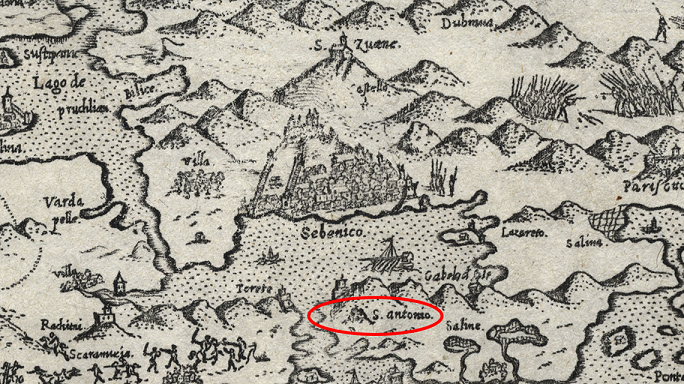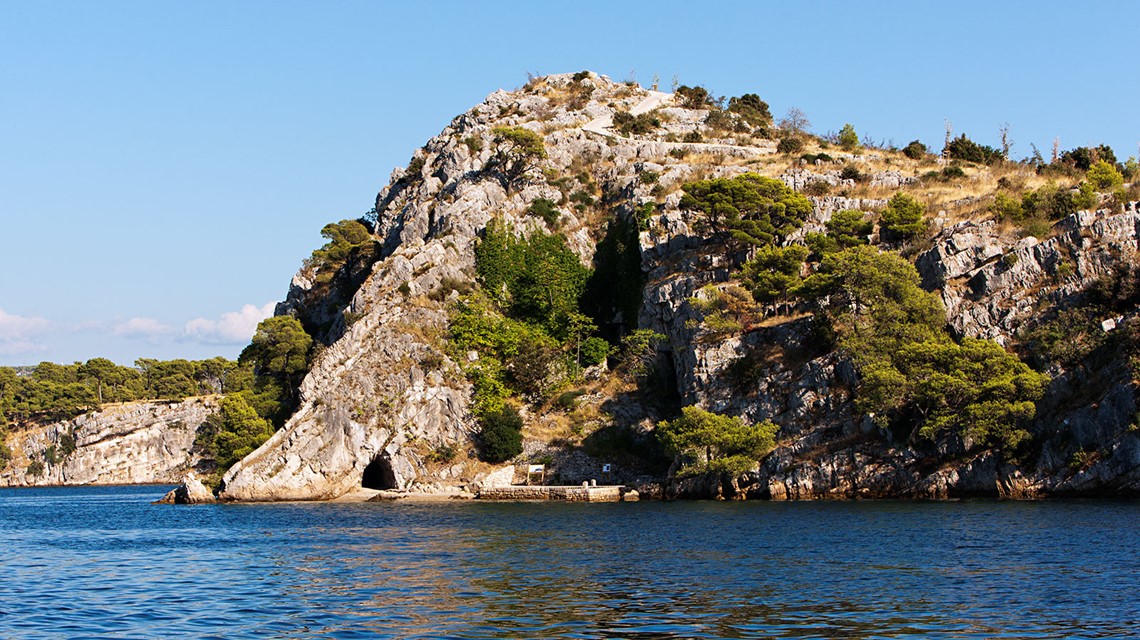Two New Traces of Medieval Beginnings of Sibenik
December 28, 2020 – The Sibenik City Museum and the Sibenik Fortress of Culture came up with two new traces of the medieval beginnings of Sibenik, one of the oldest Croatian native towns on the Adriatic.
As reported from Fortress of Culture, they came up with new findings belonging to the early Middle Ages only a few days before the 954th anniversary of the first mention of Šibenik. Namely, Šibenik was first mentioned on Christmas Day in 1066 in the deed of gift of King Petar Krešimir IV. That is why it is also called Krešimir's city.
The Šibenik City Museum, in cooperation with the Nature Institute of Šibenik-Knin County, has been researching the cave of St. Anthony the Great, located in the canal of the same name. The head of the research, senior curator of the Šibenik Museum Emil Podrug, gathered a team to write a scientific paper on this site – eight experts from five institutions and three cities (Šibenik, Split, Zagreb). The research results show that the cave was used from the 13th or 14th until the 20th century.

View of the St. Anthony the Great's Cave on the map of Martin Kolunić Rota from 1571 / Source: Fortress of Culture

Cave of St. Anthony the Great today / Source: Fortress of Culture
Plait from the middle of the 9th century
However, during a recent inspection of a baroque altar's remains in the cave, a well-preserved fragment of the altar partition pluteus (sculpture) decorated with a plait was found. It is a series of two knotted three-bar circles decorated with whirling rosettes.
Based on similar examples from Rižinice near Klis and Kašić near Zadar, it can be reliably declared as the work of the so-called Stonemasonry workshops from Prince Trpimir's time and located no later than the middle of the 9th century.
"A stone fragment with a plait into the cave was most likely brought in as a secondary building material. It should be noted that the immediate vicinity of Šibenik is not rich in archeological sites from the era of national rulers. In addition to the very important site of St. Lovre in Grušine near Donje polje, fragments of plait were found at only a few locations, mostly also as a secondary material," said Željko Krnčević, director of the Šibenik Museum.
Examples of plaits from Kašić and Rižinice / Source: Fortress of Culture
One of these rare locations is the Fortress of St. Mihovil. It is less known that a stone fragment with three-bar braids was found in the fortress as far back as 1911. Also, an oil lamp from the second half of the 9th century was found in the 1990s. The site has been used for defense since Illyrian times, and it is believed that most of the ramparts preserved today were built during the Venetian rule.
Šibenik is a century or two older
However, some walls seem older, and today's non-invasive archaeological methods provide new opportunities for exploration. One such wall is the deepest part of the northeastern rampart, whose plaster contained pieces of coal.
Experts from the Ruđer Bošković Institute performed the chemical C14 dating of coal.
A segment of the old wall, the northeastern rampart of the Fortress of St. Michael / Source: Fortress of Culture
The analysis results show date from the very end of the 9th or through the 10th century, more precisely between 881 and 978. This suggests that this part of the ramparts was built during the said period. Just a few meters away, the already mentioned oil lamp was found. The northeastern rampart's foundation extends about forty meters in the northwest-southeast direction, and a Venetian rampart from the 15th and 16th centuries was added to it.
"It was clear before that Šibenik already had to be a developed settlement to host King Petar Krešimir and his court in 1066 during the signing of the well-known deed of gift. These two new clues provide us with additional confirmation and suggest that we move the origin and continuity of Croatian Šibenik a century or two earlier. Perhaps more importantly, these findings motivate us to explore further. We believe that a systematic approach and continuous work, which includes the use of new methods, can lead to further knowledge of even the earliest periods in the history of Šibenik," said Josip Pavić from the Fortress of Culture.
To read more about lifestyle in Croatia, follow TCN's dedicated page.


